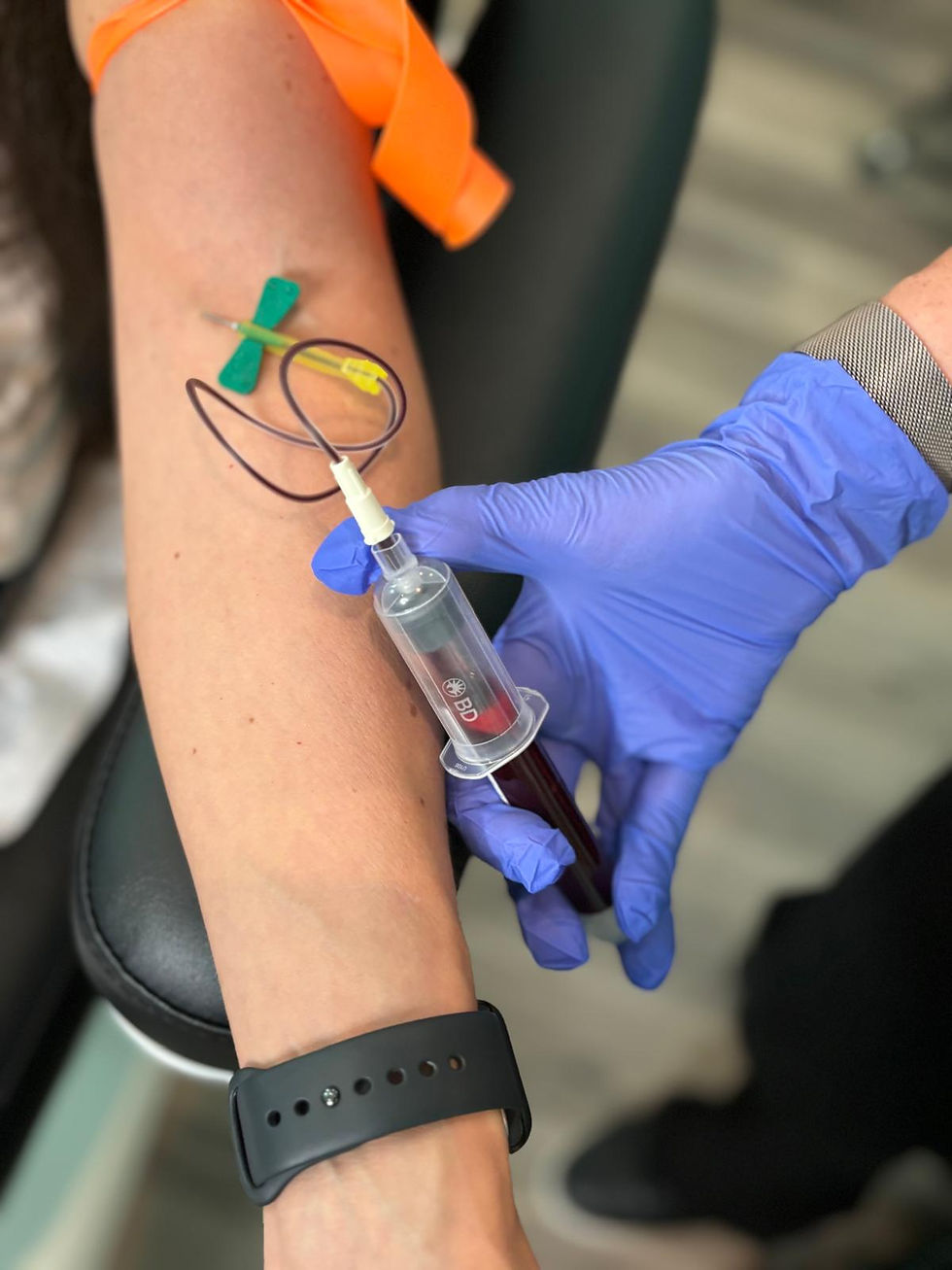Platelet-Rich Plasma Guidelines for Safe Use
- Kali Bolstad
- Jul 7
- 4 min read
Platelet-rich plasma (PRP) therapy has gained popularity as a minimally invasive treatment for various cosmetic concerns. Its applications range from skin rejuvenation to hair restoration, making it a versatile option for many individuals. However, understanding the guidelines to ensure the safe and effective use of PRP is crucial for both practitioners and patients. This post provides an overview of essential guidelines and practical information for anyone considering this innovative treatment.
PRP Cosmetic Guidelines
To achieve optimal results with PRP therapy, it is essential to follow safety and procedural guidelines. These guidelines help protect patients and ensure the efficacy of the treatment. Here are several critical considerations for those interested in PRP treatments:
Choose a Qualified Practitioner: It's vital to seek out licensed and experienced professionals who specialize in PRP therapy. Check their credentials, review patient testimonials, and ensure they have undergone appropriate training in PRP procedures.
Discuss Medical History: Open a dialogue with your practitioner about your medical history. Certain conditions may affect the suitability of PRP treatments, such as blood disorders or anticoagulant use. Being transparent will help tailor the treatment to your needs.
Understand the Procedure: Familiarize yourself with the process. PRP therapy typically involves blood collection, centrifugation to isolate platelets, and injection into the treatment area. Knowing what to expect can help alleviate anxiety.

What is the Protocol for Platelet-Rich Plasma?
A standardized protocol ensures the safe and effective use of PRP. Here’s a breakdown of the typical steps involved:
Patient Preparation: Before the procedure, the practitioner will consult the patient and assess suitability. Utmost care should be taken to disinfect the treatment area.
Blood Collection: The practitioner will draw a small amount of the patient’s blood, generally around 10-20 ml, from the arm. This step should always be performed in a clean environment to minimize the risk of contamination.
Centrifugation Process: The collected blood is placed into a centrifuge, which spins the blood to separate the components. This process typically lasts 10-15 minutes. After centrifugation, three layers can be observed: red blood cells at the bottom, a buffy coat consisting of white blood cells in the middle, and platelet-rich plasma at the top.
Injection Technique: Using a syringe, the practitioner will inject the PRP into the targeted area. Depending on the treatment, multiple injection points may be used. Ensuring anatomical accuracy during injection enhances the treatment’s effectiveness.
Post-Procedure Care: After the injections, patients may experience mild swelling or discomfort, which is normal. Avoiding strenuous activities and following any instructions given by the practitioner is essential for optimal recovery.

Safety Precautions During PRP Therapy
Safety should always be a top priority during PRP therapy. Consider the following precautions:
Avoid Temporary Blood Thinners: At least one week before the procedure, patients should refrain from taking non-steroidal anti-inflammatory drugs (NSAIDs) like ibuprofen or aspirin, as these can increase bleeding.
Follow Pre-Procedure Instructions: Your practitioner may provide specific guidelines to follow before the treatment. This may include avoiding alcohol and staying hydrated to ensure optimal blood quality.
Monitor for Side Effects: After the treatment, be vigilant for any unusual reactions such as excessive swelling, redness, or signs of infection. If any severe symptoms arise, contact your healthcare provider immediately.
Understand Limitations: While PRP therapy has many benefits, it is not a miracle solution. Setting realistic expectations regarding the results can lead to a more satisfactory experience. Discuss with your practitioner what can reasonably be achieved based on your individual situation.

What to Expect After PRP Treatments
Post-treatment recovery is essential for successful outcomes. Here are common experiences and recommendations for those who have undergone PRP therapy:
Initial Recovery: Some swelling and tenderness in the injected area is typical. Applying ice packs can help alleviate discomfort.
Results Timeline: Many patients begin to see initial improvements within a few weeks, with optimal results usually emerging around three months after the treatment. This timeframe varies depending on individual factors and the areas treated.
Follow-Up Treatments: PRP is often not a one-time treatment. Depending on your goals, multiple sessions may be necessary to achieve and maintain desired results. Have a conversation with your practitioner about a suitable treatment schedule.
Lifestyle Factors: Maintaining a healthy diet and skincare routine can influence the outcomes of PRP therapy. Ensure you are caring for your skin and overall wellness post-treatment to support the best results.
The Future of PRP Therapy
As research continues, the potential applications of PRP therapy are expanding. Areas such as wound healing, orthopedics, and even sexual health are seeing promising developments. Awareness of the existing and emerging guidelines is essential for the safe integration of PRP into various treatment protocols.
In conclusion, adhering to platelet-rich plasma guidelines is crucial for anyone considering this innovative treatment. By staying informed and working with qualified professionals, patients can enhance their chances of experiencing successful outcomes and reach their aesthetic goals safely. In order to learn more about best practices regarding PRP therapy, consider researching additional sources or discussing with a licensed practitioner.




Comments